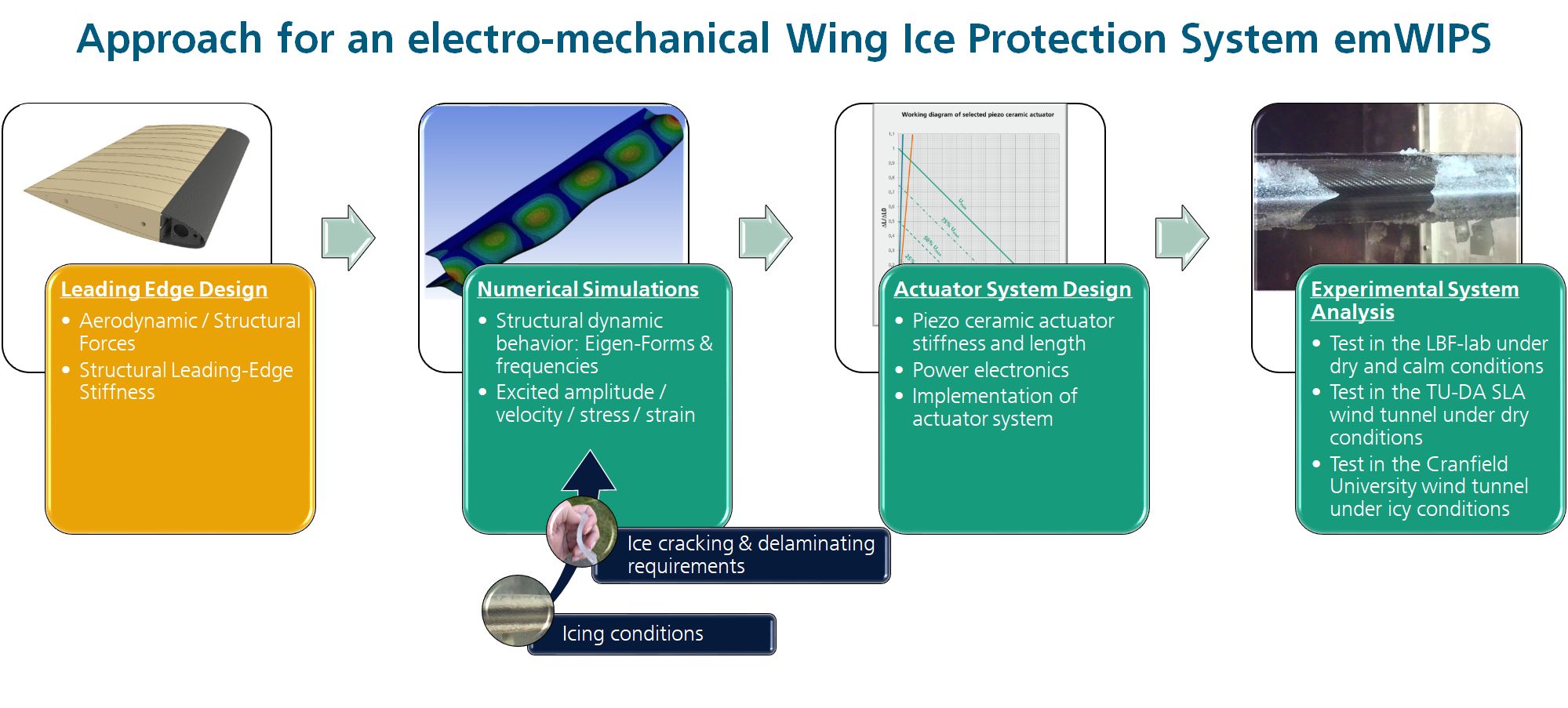UP-Wing - Development of a vibration-based de-icing process for aircraft wings
The icing of aircraft wings, especially on the leading edge, impairs aerodynamics and jeopardizes the safety and efficiency of flight operations. Conventional thermal de-icing systems are energy-intensive and incompatible with emission-free aircraft engines.
Experts from Fraunhofer LBF are developing an innovative electromechanical de-icing system based on structural dynamic vibrations as part of the EU project “UP-Wing” (Clean Aviation Innovation Program).
The innovative electromechanical de-icing system uses highly dynamic actuators to generate vibrations in the frequency range up to 5 kHz, which break up and remove the ice layer. Through targeted resonance excitation of the wing structure, ice is mechanically removed with minimal energy consumption. This resolves the conflict between the necessary de-icing performance and the growing demands for efficiency and CO₂ reduction in aviation.
A key feature is the smart structures approach, in which sensor signals are fed back to a control unit that continuously determines the structural dynamics of the wing and adjusts the optimum excitation signal in real time. This achieves maximum de-icing efficiency with minimum energy consumption.

The Fraunhofer LBF's research is thus making a significant contribution to the further development of sustainable aviation technologies. In the context of emission-free aviation in particular, this de-icing system opens up new possibilities for more energy-efficient and safer flight operations.
This innovative de-icing system offers significant advantages for aircraft manufacturers, airlines, and operators. It represents an energy-efficient alternative to conventional thermal de-icing systems and enables significant energy savings in the high double-digit percentage range. In addition, weight savings in the mid-single-digit percentage range can be achieved. Due to the independence of the drive type used, the de-icing system is compatible with all future alternative drive types. The system is suitable for use in commercial passenger aircraft as well as in all other aircraft classes and represents a future-proof, energy-efficient solution for de-icing.
In addition to aviation, further applications are conceivable in the fields of wind turbines, maritime shipping, and high-voltage power lines.


Sponsors and partners
The Ultra Performance Wing (UP Wing, project number: 101101974) project is supported by the Clean Aviation Joint Undertaking and its members.
Co-funded by the European Union.
 Fraunhofer Institute for Structural Durability and System Reliability LBF
Fraunhofer Institute for Structural Durability and System Reliability LBF